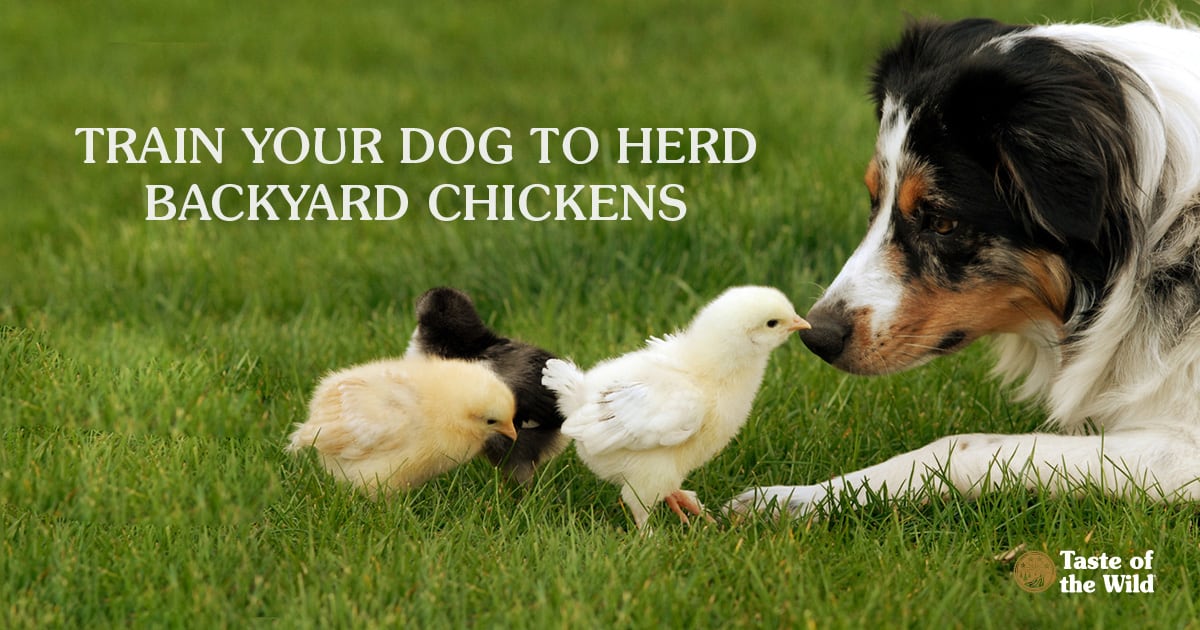
Backyard chicken herding can be a relief for the hobby farmer for two reasons: first, it allows your chickens to range freely in the yard without hassle from predators; and second, it provides stimulating exercise for your pooch.
However, while your dog may have natural herding instincts, in order to successfully herd chickens, he or she will need training to learn to be gentle around the fowl and successfully herd them back into their coop.
Is my dog right for herding?
Herding dogs possess natural instincts and high intelligence, making them ideal for household and farming tasks.
The most common chicken-herding dogs are:
- Australian shepherd
- Border collie
- Shetland sheepdog
- Great Pyrenees
- Collie
- Welsh corgi
Other dogs can certainly learn to herd chickens — it’s just a bit easier to start with a breed that naturally enjoys the task.
Training your dog
Teaching your dog new skills
According to dog behaviorist and expert trainer Carolyn Georgariou, the key to your dog becoming a herding master is learning how to leave it. While your dog should know all the basics, such as come, heel, lie down, sit, and stay, knowing how to leave it is essential for your dog to remain well-behaved around your chickens. If your dog struggles with these commands, well . . . chicken herding might be a bit of a reach.
Once your dog has these basic instructions mastered, move on to more complex commands. The goal, as you introduce your dog to your chickens, is to be able to implement your basic directions while training for more complex, herding-specific commands.
Gauging your dog’s behavior
Natural herding instincts will be displayed early on for many herding dogs. To spot these signs, watch how he or she interacts with you or other animals. If he or she likes to circle around you in an attempt to influence you in a specific direction, it is a good sign that he or she will easily and effectively learn how to herd your chickens.
Some dogs may even naturally start herding after watching you interact with the chickens.
“I used my Australian shepherd to herd chickens,” said Kim Pezza, author of the Backyard Farming series. “She watched me put the birds in for a short time, then one day she looked at me as if to say, ‘I want to help.’ Every night for the rest of her life, she brought the chickens in from the woods… however I never really trained her.”
Play some catch
Not only is playing catch an excellent form of exercise, it also teaches your dog basic obedience skills and will help him or her develop his or her chasing instincts. To make this more applicable to herding chickens (and to prevent thinning your flock unintentionally), teach your dog to catch only on command.
Introducing your herder to the herd
Start the introduction process slowly to avoid aggression from your dog. If your dog seems anxious, take a break and reintroduce the chickens after he or she has calmed down. Repeating this process will lessen the chance of your dog becoming overexcited around your backyard fowl in the future.
Don’t let the herder hurt the herd
After you’ve introduced your dog to your chickens and have started training him or her to herd real animals, watch your dog’s body language. It will be clear if your dog is capable of and ready for this task.
A good herder should approach the chickens with his or her tail down and run circles around them. If your dog does this while remaining attentive to your commands, you can be confident in him or her. If not, you may need to continue training — or even scrap the idea entirely.
Remember, if your dog is not interested in herding chickens, he or she will not respond to any chicken-related training that you introduce to him or her.
All in a day’s work
It takes time and commitment to train a dog to herd animals, but once this process is completed, your herding dog can be a very helpful resource for you and your backyard farm. By honing his or her herding skills, you’ll soon find that your dog will be ready to help you raise your chickens.
The information in this blog has been developed with our veterinarian and is designed to help educate pet parents. If you have questions or concerns about your pet's health or nutrition, please talk with your veterinarian.
